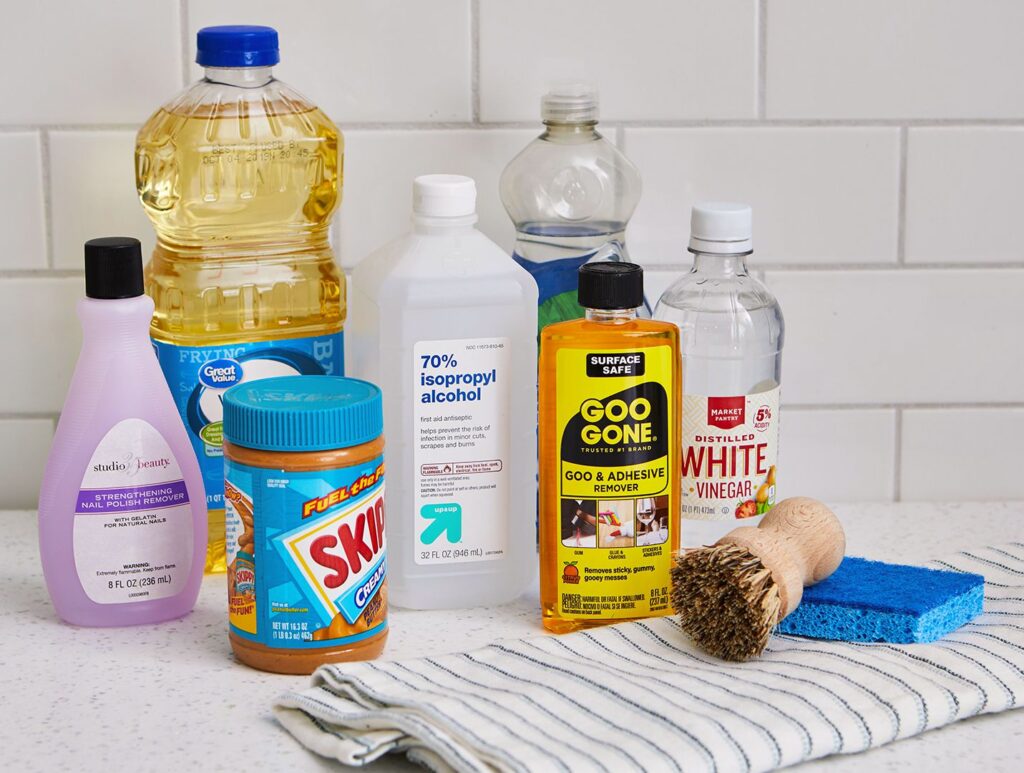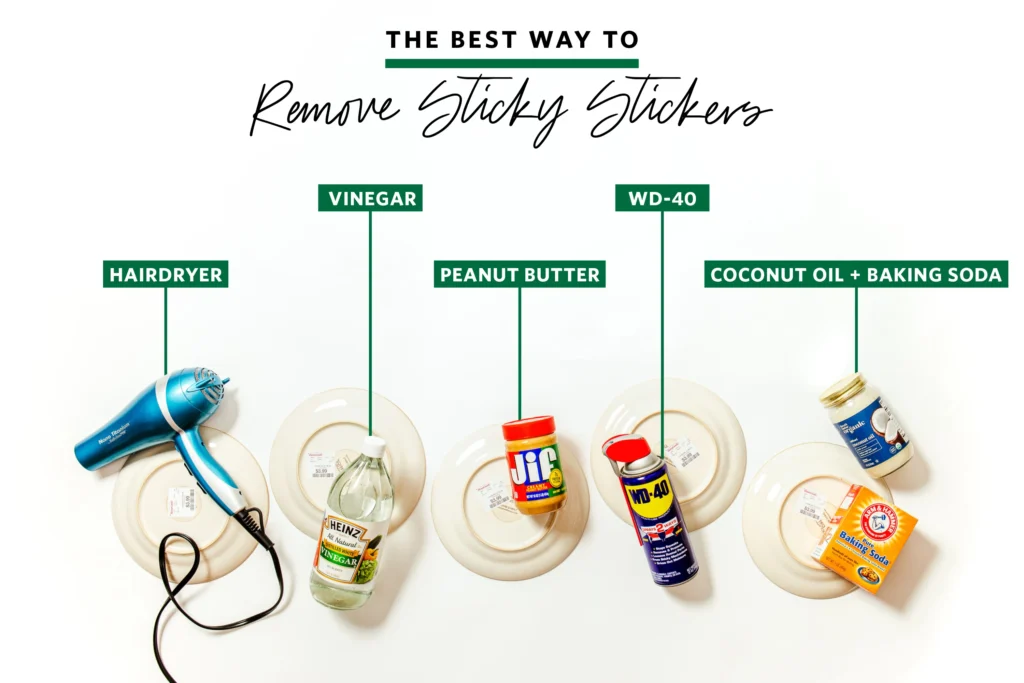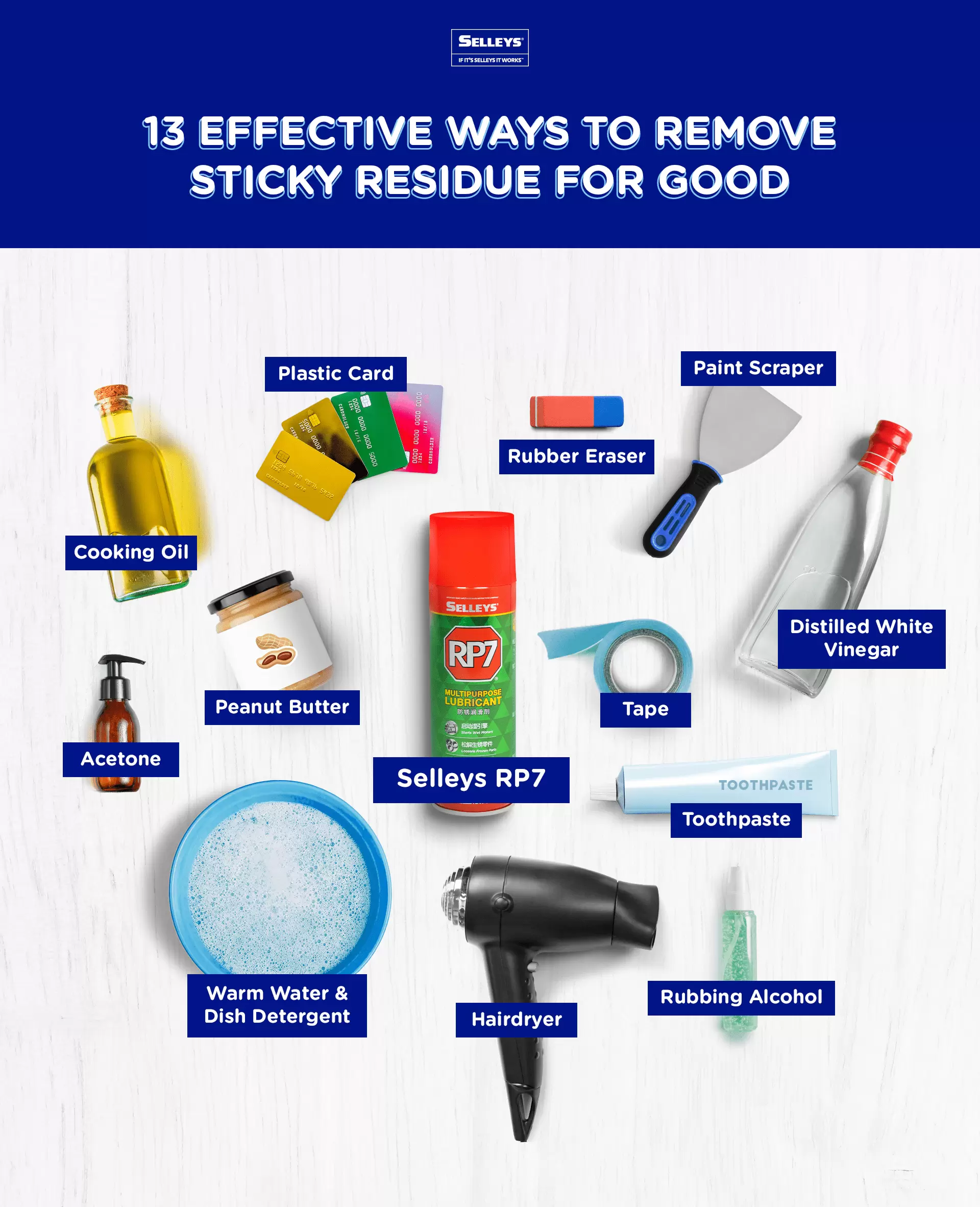Removing sticker residue can be annoying, but with the right tools and techniques, you can restore any surface to a clean, adhesive-free state. Whether you’re dealing with glass, metal, plastic, wood, or even fabric, this comprehensive guide from thehowtotips.com provides everything you need for easy, effective removal.
Table of Contents
- 1. Preparation & Precautions
- 2. Step 1: Manual Removal
- 3. Step 2: Heat Method
- 4. Step 3: Solvent Applications
- 5. Step 4: Natural Oils & Food Items
- 6. Step 5: Commercial Cleaners
- 7. Step 6: Specialty Paste
- 8. Final Cleanup & Polishing
- 9. FAQ
1. Preparation & Precautions
- Test in a hidden area — Always try your method on a small, unobtrusive spot to prevent staining or damage.
- Gather tools: plastic scraper (or old credit card), hairdryer, cloths, warm water, dish soap, rubbing alcohol, vinegar, cooking oil, peanut butter, WD‑40, specialty paste.
- Protect surfaces: Place a towel under items to prevent drips and spills.
2. Step 1: Manual Removal
Start by peeling off as much sticker and residue as possible with your fingers or a plastic scraper. This simple step often removes most of the sticky mess. Use caution—avoid metal tools to prevent scratches. :contentReference[oaicite:1]{index=1}
3. Step 2: Heat Method
Use a hairdryer on medium heat to warm the adhesive for 10–15 seconds. As it softens, peel or gently scrape the residue. This method works well on glass, metal, and painted surfaces. :contentReference[oaicite:2]{index=2}
4. Step 3: Solvent Applications
- Rubbing alcohol or vodka: Soak a cloth and press onto residue for a few minutes. Wipe clean reliably on wood, plastic, and glass. :contentReference[oaicite:3]{index=3}
- White vinegar: Similar to alcohol, soak and lay over residue for 5–10 minutes before wiping. :contentReference[oaicite:4]{index=4}
5. Step 4: Natural Oils & Food Items
- Cooking oil (olive or canola): Dab and let stand 10–30 minutes, then wipe away. Safe for glass, plastic, metal. :contentReference[oaicite:5]{index=5}
- Peanut butter: Apply 15 minutes before wiping. The oil helps dissolve adhesive. :contentReference[oaicite:6]{index=6}
- Mayonnaise: Functions like oil + acid; apply, wait, then wipe away. Can soften glue effectively. :contentReference[oaicite:7]{index=7}
- Baking soda + coconut oil paste: Mix 2:1 (oil:soda), rub on residue, and wipe clean—great for tough cases. :contentReference[oaicite:8]{index=8}
6. Step 5: Commercial Cleaners
Use products like Goo Gone or WD‑40 for reliable removal. Spray or apply per instructions, wait a few minutes, then wipe off. These are excellent for metal, wood, plastic, even decals. :contentReference[oaicite:9]{index=9}
7. Step 6: Specialty Paste
For serious cases, use abrasive oil‑based paste like “The Pink Stuff”. Its natural oils and micro‑abrasives dissolve adhesive fast without damaging surfaces. Simply apply, scrub, and wipe. :contentReference[oaicite:10]{index=10}
8. Final Cleanup & Polishing
- Wash the area with warm, soapy water to remove oil or chemical residue.
- Dry thoroughly and polish if needed (e.g., mirror or glass cleaner for clarity).
- Dispose of rags properly if solvents were used.
Video Tutorials
9. Frequently Asked Questions (FAQ)
Q: Can I use nail polish remover (acetone)? A: Yes, especially on fabric or harder plastics—test first as it may damage some surfaces. :contentReference[oaicite:11]{index=11} Q: Is toothpaste effective? A: Only as a mild abrasive (non‑gel, baking soda‑based). Safe on non‑porous surfaces but avoid wood/fabric. :contentReference[oaicite:12]{index=12} Q: What if sticker residue is on clothes? A: Use acetone for natural fibers, freeze for synthetics, then wash with warm, soapy water. :contentReference[oaicite:13]{index=13} Q: How do I remove residue from painted walls? A: Use warm, soapy water, vinegar, or heat. Always test a small patch to protect paint. :contentReference[oaicite:14]{index=14}
Need More Help?
Visit our full guide at Remove Sticker Residue for bonus tips, surface‑specific instructions, and troubleshooting advice.



